TECLA (an acronym for “Technology and Clay”) is a prototype eco-house built near Ravenna, Italy. It is made entirely by 3D-printing a material based on locally-sourced clay and is a collaboration between architect Mario Cucinella and 3D-printer manufacturer WASP. 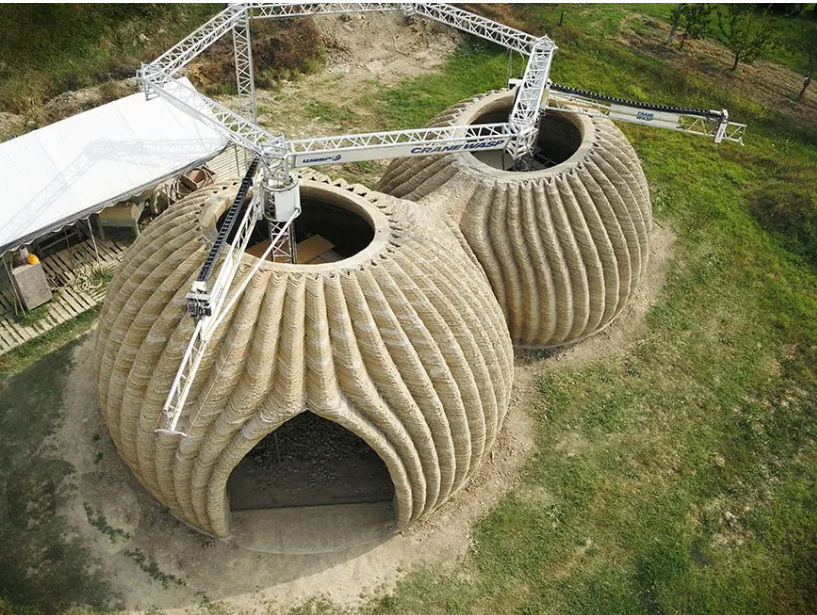
TECLA is a habitat consisting of two interconnected housing units, each covered by a semi-spherical dome. These have been built using multiple printing units operating simultaneously. The printing system is capable of printing houses with various materials – such as earth-based materials, concrete mortar, and geopolymers – with a maximum speed of 300 mm/s and a maximum printing area of 50 sqm per unit.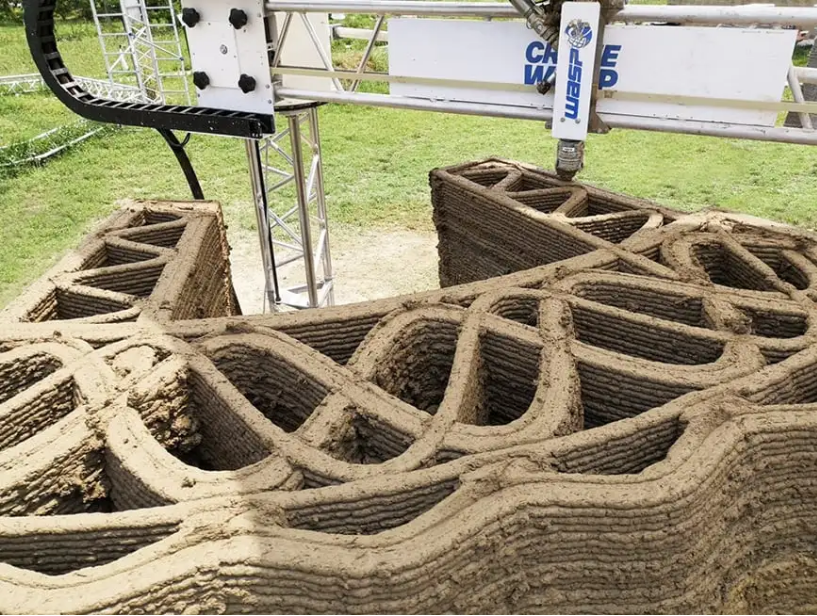
The design features two or more “cocoon-like” housing units, in which structure, insulation, and finishes coincide. The thick raw earth walls of the units have a hollow structure consisting of several clay “waves”, which makes them at the same time relatively lightweight, strong, and insulating. About 200 printing hours are required to build each unit, which consists of 350 clay layers, each 12 mm thick.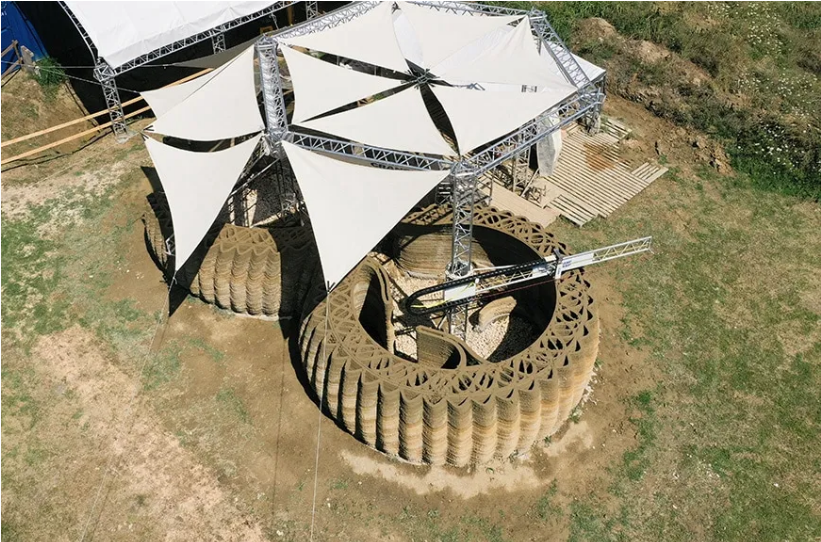
The use of raw earth as the primary construction material will make it easier to create modular and zero-waste dwellings in environments where it would be difficult to transport other industrial materials. The building technology and equipment will be available through a “Maker Economy Starter Kit” suitable for self-production.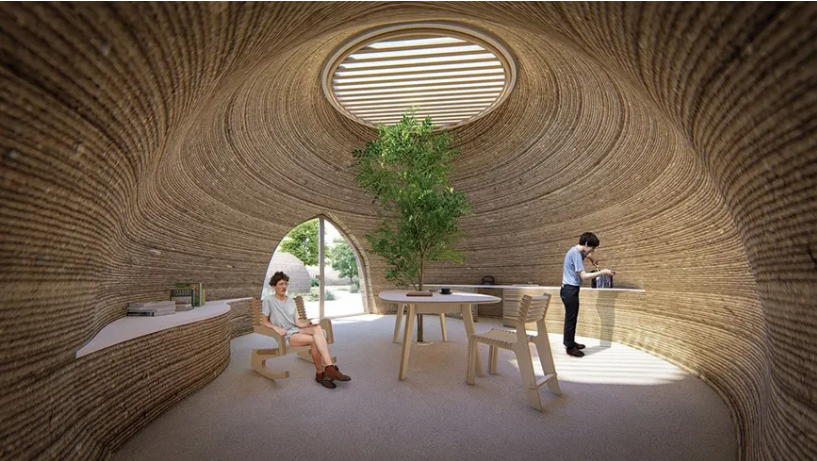
Mario Cucinella says, “Together with WASP we aim at developing an innovative 3D-printed prototype for a habitat that responds to the increasingly urgent climate revolution and the needs of changes dictated by community needs. We need a paradigm shift in the field of architecture that gets closer to the needs of people, thus finding an answer for the “Earth” within the “earth”. A collaboration that becomes the union between empathic architecture and the application of new technologies.” 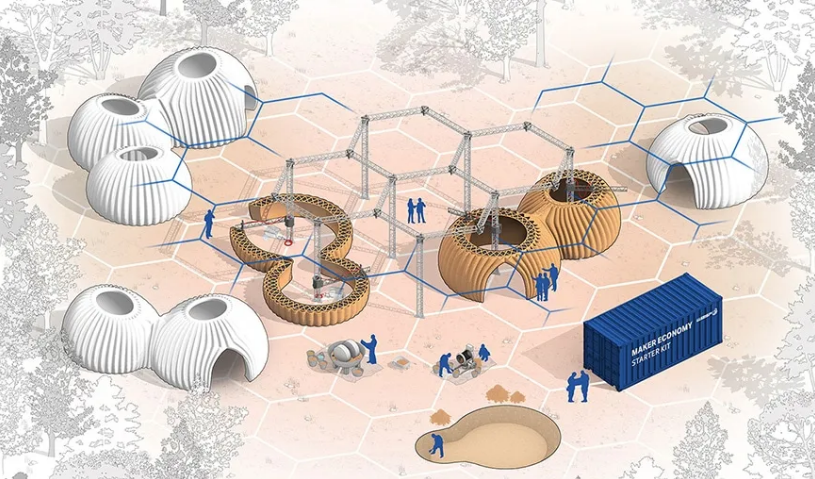
Now in an advanced stage of construction, TECLA is scheduled for completion this spring.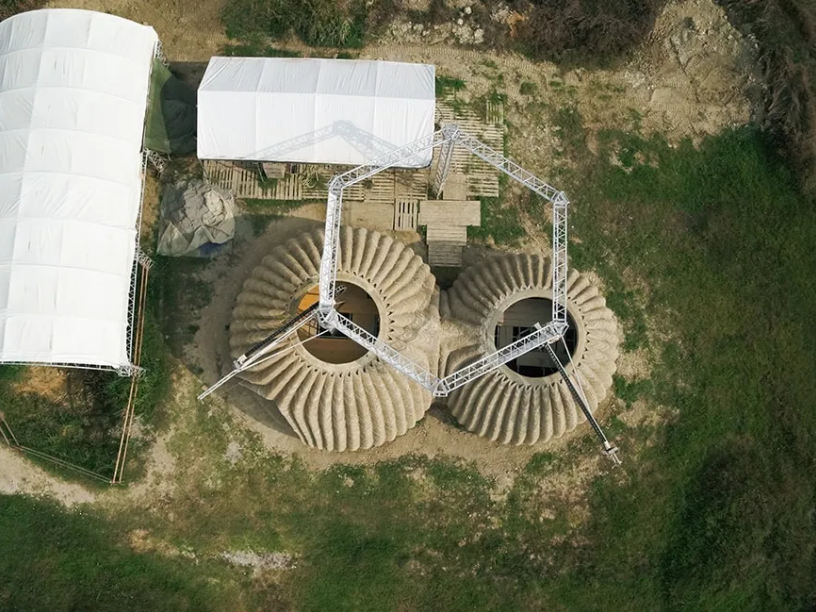
All images courtesy of MCA Mario Cucinella Architects and WASP
You can read the original article at www.inexhibit.com

These are very cool aesthetically, but practically all I am seeing is a mud house with no roof.
And what about earthquakes? Unless the spherical form helps maintain the stability under stress, it seems like a good shake would be the death of these things.
Is this more of a proof of concept than a practical idea? It just doesn’t seem a prudent way to make earth buildings.
These buildings are obviously experimental; it will take the test of time to see how they hold up. The mud must be stabilized, or the first heavy rain will start to wash it all away.
YOOHOO! so excited to see the 3-D printing happening with earthen materials!